
Research papers of the month – November 2021
We present the highest-score research papers of November 2021. These papers have ben published in journals with the highest Ministerial score – 200 points.
Effects of obesity on pulmonary function considering the transition from obstructive to restrictive pattern from childhood to young adulthood
Li Huang, Sen-te Wang, Han-pin Kuo, Christophe Delclaux, Megan E. Jensen, Lisa G. Wood, Dirceu Costa, Dariusz Nowakowski, Paula Oliveira, Yi-Chun Chen, Yang-Ching Chen, Yungling L. Lee
Obesity Reviews
Ministerial score = 200.0
JIF Impact Factor (2020) = 9.213
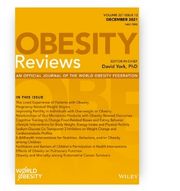 Adults with obesity exhibit a restrictive pattern, whereas children with obesity exhibit an obstructive pattern. However, the transition process remains unclear. We performed a systematic search for studies reporting on body mass index and pulmonary function in children. The main outcomes were forced expiratory volume in 1 s (FEV1), forced vital capacity (FVC), and their ratio (FEV1/FVC). We compared individuals with overweight or with obesity with individuals with normal weight. Random-effects models were used to calculate pooled estimates. A total of 17 studies were included. Individuals with obesity had a lower FEV1/FVC ratio (mean difference [MD] = −3.61%; 95% confidence interval [CI] = −4.58%, −2.64%) and a higher percent-predicted FVC (MD = 3.33%; 95% CI = 0.79%, 5.88%) than those with normal weight. Obesity impaired pulmonary function in the obstructive pattern during childhood to young adulthood, and the maximum obstruction was observed at the age of 16 years in boys and 20 years in girls. The effects attenuated at approximately 30 years and then shifted to the restrictive pattern after 35 years of age in men and 40 years in women. The effects of obesity on pulmonary function change from the obstructive pattern in childhood to the restrictive pattern in adulthood.
Adults with obesity exhibit a restrictive pattern, whereas children with obesity exhibit an obstructive pattern. However, the transition process remains unclear. We performed a systematic search for studies reporting on body mass index and pulmonary function in children. The main outcomes were forced expiratory volume in 1 s (FEV1), forced vital capacity (FVC), and their ratio (FEV1/FVC). We compared individuals with overweight or with obesity with individuals with normal weight. Random-effects models were used to calculate pooled estimates. A total of 17 studies were included. Individuals with obesity had a lower FEV1/FVC ratio (mean difference [MD] = −3.61%; 95% confidence interval [CI] = −4.58%, −2.64%) and a higher percent-predicted FVC (MD = 3.33%; 95% CI = 0.79%, 5.88%) than those with normal weight. Obesity impaired pulmonary function in the obstructive pattern during childhood to young adulthood, and the maximum obstruction was observed at the age of 16 years in boys and 20 years in girls. The effects attenuated at approximately 30 years and then shifted to the restrictive pattern after 35 years of age in men and 40 years in women. The effects of obesity on pulmonary function change from the obstructive pattern in childhood to the restrictive pattern in adulthood.
DOI:10.1111/obr.13327
Impact of deficit irrigation on fruit yield and lipid profile of terraced avocado orchards
Victor Hugo Durán Zuazo, Leontina Lipan, Belén Cárceles Rodríguez, Esther Sendra, Dionisio Franco Tarifa, Agnieszka Nemś, Baltasar Gálvez Ruiz, Angel Carbonell-Barrachina, Iván Francisco García-Tejero
Agronomy for Sustainable Development
Ministerial score = 200.0
JIF Impact Factor (2020) = 5.832
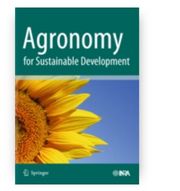 Avocado (Persea americana Mill.) is a subtropical tree, particularly sensitive to either an excess or a lack of water. Understanding this balance is crucial to determine the optimum water supply and enhance crop productivity. The rising shortage of water resources in semiarid producing regions and the need for irrigation optimization call for sustainable water savings. A 3-year monitoring study with avocado cv. “Hass” tested sustained-deficit irrigation strategies supplying 33, 50 or 75% of the estimated crop water demand. They were compared with a control strategy supplying 100% of the estimated crop water demand. The leaf water potential, stomatal conductance, tree growth, yield and several fruit quality parameters were evaluated. The yield, tree growth and fruit size were significantly and proportionally lessened by deficit irrigation treatments. Over the study, the average yields amounted to 31.6, 38.3 and 43.8 kg tree−1 in the 33, 50 and 75% treatments respectively, which were significantly less than the yield of 47.5 kg tree−1 measured in the control. The 33% and 75% sustained-deficit irrigation treatments increased the omega 3 and omega 6 fatty acids as well as the unsaturated fatty acids (oleic); however, the 33% deficit irrigation treatment significantly reduced the yield, size and fruit weight. We consider, therefore, that approximately 25% of the irrigation water can be saved without adversely affecting the avocado tree performance in short and medium terms and we recommend implementing the 75% sustained-deficit irrigation strategy. Here we show for the first time the key role of redesigning irrigation strategies in Mediterranean areas, focusing on the benefits of sustained-deficit irrigation, which can save water, encourage water use efficiency and enhance fruit quality. In order to save water, it is critical and necessary to implement such novel water shortage strategies, at the affordable cost of reducing fruit yield while enhancing its quality.
Avocado (Persea americana Mill.) is a subtropical tree, particularly sensitive to either an excess or a lack of water. Understanding this balance is crucial to determine the optimum water supply and enhance crop productivity. The rising shortage of water resources in semiarid producing regions and the need for irrigation optimization call for sustainable water savings. A 3-year monitoring study with avocado cv. “Hass” tested sustained-deficit irrigation strategies supplying 33, 50 or 75% of the estimated crop water demand. They were compared with a control strategy supplying 100% of the estimated crop water demand. The leaf water potential, stomatal conductance, tree growth, yield and several fruit quality parameters were evaluated. The yield, tree growth and fruit size were significantly and proportionally lessened by deficit irrigation treatments. Over the study, the average yields amounted to 31.6, 38.3 and 43.8 kg tree−1 in the 33, 50 and 75% treatments respectively, which were significantly less than the yield of 47.5 kg tree−1 measured in the control. The 33% and 75% sustained-deficit irrigation treatments increased the omega 3 and omega 6 fatty acids as well as the unsaturated fatty acids (oleic); however, the 33% deficit irrigation treatment significantly reduced the yield, size and fruit weight. We consider, therefore, that approximately 25% of the irrigation water can be saved without adversely affecting the avocado tree performance in short and medium terms and we recommend implementing the 75% sustained-deficit irrigation strategy. Here we show for the first time the key role of redesigning irrigation strategies in Mediterranean areas, focusing on the benefits of sustained-deficit irrigation, which can save water, encourage water use efficiency and enhance fruit quality. In order to save water, it is critical and necessary to implement such novel water shortage strategies, at the affordable cost of reducing fruit yield while enhancing its quality.
DOI:10.1007/s13593-021-00731-x
Cryoconite – From minerals and organic matter to bioengineered sediments on glacier's surfaces
Piotr Rozwalak, Paweł Podkowa, Jakub Buda, Przemysław Niedzielski, Szymon Kawecki, Roberto Ambrosini, Roberto S. Azzoni, Giovanni Baccolo, Jorge L. Ceballos, Joseph Cook, Biagio Di Mauro, Gentile Francesco Ficetola, Andrea Franzetti, Dariusz Ignatiuk, Piotr Klimaszyk, Edyta Łokas, Masato Ono, Ivan Parnikoza, Mirosława Pietryka, Francesca Pittino, Ewa Poniecka, Dorota L. Porazinska, Dorota Richter, Steven K. Schmidt, Pacifica Sommers, Juliana Souza-Kasprzyk, Marek Stibal, Witold Szczuciński, Jun Uetake, Łukasz Wejnerowski, Jacob C. Yde, Nozomu Takeuchi, Krzysztof Zawierucha
Agronomy for Sustainable Development
Ministerial score = 200.0
JIF Impact Factor (2020) = 7.963
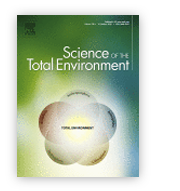 Cryoconite is a mixture of mineral and organic material covering glacial ice, playing important roles in biogeochemical cycles and lowering the albedo of a glacier surface. Understanding the differences in structure of cryoconite across the globe can be important in recognizing past and future changes in supraglacial environments and ice-organisms-minerals interactions. Despite the worldwide distribution and over a century of studies, the basic characteristics of cryoconite, including its forms and geochemistry, remain poorly studied. The major purpose of our study is the presentation and description of morphological diversity, chemical and photoautotrophs composition, and organic matter content of cryoconite sampled from 33 polar and mountain glaciers around the globe. Observations revealed that cryoconite is represented by various morphologies including loose and granular forms. Granular cryoconite includes smooth, rounded, or irregularly shaped forms; with some having their surfaces covered by cyanobacteria filaments. The occurrence of granules increased with the organic matter content in cryoconite. Moreover, a major driver of cryoconite colouring was the concentration of organic matter and its interplay with minerals. The structure of cyanobacteria and algae communities in cryoconite differs between glaciers, but representatives of cyanobacteria families Pseudanabaenaceae and Phormidiaceae, and algae families Mesotaeniaceae and Ulotrichaceae were the most common. The most of detected cyanobacterial taxa are known to produce polymeric substances (EPS) that may cement granules. Organic matter content in cryoconite varied between glaciers, ranging from 1% to 38%. The geochemistry of all the investigated samples reflected local sediment sources, except of highly concentrated Pb and Hg in cryoconite collected from European glaciers near industrialized regions, corroborating cryoconite as element-specific collector and potential environmental indicator of anthropogenic activity. Our work supports a notion that cryoconite may be more than just simple sediment and instead exhibits complex structure with relevance for biodiversity and the functioning of glacial ecosystems.
Cryoconite is a mixture of mineral and organic material covering glacial ice, playing important roles in biogeochemical cycles and lowering the albedo of a glacier surface. Understanding the differences in structure of cryoconite across the globe can be important in recognizing past and future changes in supraglacial environments and ice-organisms-minerals interactions. Despite the worldwide distribution and over a century of studies, the basic characteristics of cryoconite, including its forms and geochemistry, remain poorly studied. The major purpose of our study is the presentation and description of morphological diversity, chemical and photoautotrophs composition, and organic matter content of cryoconite sampled from 33 polar and mountain glaciers around the globe. Observations revealed that cryoconite is represented by various morphologies including loose and granular forms. Granular cryoconite includes smooth, rounded, or irregularly shaped forms; with some having their surfaces covered by cyanobacteria filaments. The occurrence of granules increased with the organic matter content in cryoconite. Moreover, a major driver of cryoconite colouring was the concentration of organic matter and its interplay with minerals. The structure of cyanobacteria and algae communities in cryoconite differs between glaciers, but representatives of cyanobacteria families Pseudanabaenaceae and Phormidiaceae, and algae families Mesotaeniaceae and Ulotrichaceae were the most common. The most of detected cyanobacterial taxa are known to produce polymeric substances (EPS) that may cement granules. Organic matter content in cryoconite varied between glaciers, ranging from 1% to 38%. The geochemistry of all the investigated samples reflected local sediment sources, except of highly concentrated Pb and Hg in cryoconite collected from European glaciers near industrialized regions, corroborating cryoconite as element-specific collector and potential environmental indicator of anthropogenic activity. Our work supports a notion that cryoconite may be more than just simple sediment and instead exhibits complex structure with relevance for biodiversity and the functioning of glacial ecosystems.
DOI:10.1016/j.scitotenv.2021.150874
Profiling of polyphenols by LC-QTOF/ESI-MS, characteristics of nutritional compounds and in vitro effect on pancreatic lipase, α-glucosidase, α-amylase, cholinesterase and cyclooxygenase activities of sweet (Prunus avium) and sour (P. cerasus) cherries lea
Aneta Wojdyło, Paulina Nowicka, Igor Turkiewicz, Karolina Tkacz
Industrial Crops
Ministerial score = 200.0
JIF Impact Factor (2020) = 5.645
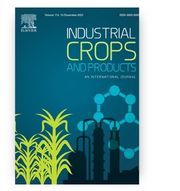 The aim of this present study was to comprehensively investigate polyphenolics by Liquid Chromatography– Quadrupole Time–of–Flight–Electrospry Ionization Mass Spectrofotometer (LC-QTOF/ESI-MS), amino acids, triterpene compounds, minerals, and organic acids, perform detailed analysis of sweet and sour cherry (S^Sch) fruits and leaves, and evaluate antioxidant capacity, inhibition of pancreatic lipase, α-glucosidase, α-amylase, acetylcholinesterase (AChE) and butylcholinesterase (BChE), cyclooxygenase (COX-1, COX-2). The fraction determined the chemical content and biologically properties more strongly than the cultivars. A total of 27 phenolic compounds were identified by LC-QTOF/ESI-MS, and they included flavanols > phenolic acids > flavonols and flavanols >> anthocyanins for fruits. Higher total phenolic content was found in leaves (854.5–2955.6 mg/100 g dw) than fruits (288.4–871.7 mg/100 g dw). Pearson’s correlation and Principal Components Analysis (PCA) showed that phenolic compounds, minerals and amino acids were the main contributors to the in vitro enzymatic activity. Leaves were the most active in oxygen radical antioxidant capacity (ORAC), and present high potential for inhibition of some enzymes including AChE, BChE, α-amylase, COX-1 and COX-2. Fruits characterized by a high content of anthocyanins, triterpene compounds, organic acid and sugars were associated with 2,2′-azino-bis(3-ethylbenzothiazoline-6-sulfonic acid) radical cation (ABTS+o) and the Ferric Reducing Ability of Plasma (FRAP) capacity and inhibition of α-amylase, α-glucosidase and pancreatic lipase. Presented results showed that sour cherry leaves are valuable natural source of polyphenolic, amino acids and mineral compounds. Leaves are promising sources for creating of new products with beneficial effects on industrial.
The aim of this present study was to comprehensively investigate polyphenolics by Liquid Chromatography– Quadrupole Time–of–Flight–Electrospry Ionization Mass Spectrofotometer (LC-QTOF/ESI-MS), amino acids, triterpene compounds, minerals, and organic acids, perform detailed analysis of sweet and sour cherry (S^Sch) fruits and leaves, and evaluate antioxidant capacity, inhibition of pancreatic lipase, α-glucosidase, α-amylase, acetylcholinesterase (AChE) and butylcholinesterase (BChE), cyclooxygenase (COX-1, COX-2). The fraction determined the chemical content and biologically properties more strongly than the cultivars. A total of 27 phenolic compounds were identified by LC-QTOF/ESI-MS, and they included flavanols > phenolic acids > flavonols and flavanols >> anthocyanins for fruits. Higher total phenolic content was found in leaves (854.5–2955.6 mg/100 g dw) than fruits (288.4–871.7 mg/100 g dw). Pearson’s correlation and Principal Components Analysis (PCA) showed that phenolic compounds, minerals and amino acids were the main contributors to the in vitro enzymatic activity. Leaves were the most active in oxygen radical antioxidant capacity (ORAC), and present high potential for inhibition of some enzymes including AChE, BChE, α-amylase, COX-1 and COX-2. Fruits characterized by a high content of anthocyanins, triterpene compounds, organic acid and sugars were associated with 2,2′-azino-bis(3-ethylbenzothiazoline-6-sulfonic acid) radical cation (ABTS+o) and the Ferric Reducing Ability of Plasma (FRAP) capacity and inhibition of α-amylase, α-glucosidase and pancreatic lipase. Presented results showed that sour cherry leaves are valuable natural source of polyphenolic, amino acids and mineral compounds. Leaves are promising sources for creating of new products with beneficial effects on industrial.
DOI:10.1016/j.indcrop.2021.114214
Inca water channel flow analysis based on 3D models from terrestrial and UAV laser scanning at the Chachabamba archaeological site (Machu Picchu National Archaeological Park, Peru)
Dominika Sieczkowska, Bartłomiej Ćmielewski, Krzysztof Wolski, Paweł Dąbek, José M. Bastante, Izabela Wilczyńska
Journal of Archaeological Science
Ministerial score = 200.0
JIF Impact Factor (2020) = 3.216 (Q1)
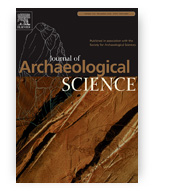 The Chachabamba archaeological site contains a unique water complex erected and modified by the Incas. Based on archaeological investigations within the ceremonial sector, it has been established that the function of this water complex was strictly ceremonial. Moreover, hydrodynamic studies of the water supply canals have verified the previous findings. Due to the complex characteristics of the site, which is largely overgrown by dense vegetation, we employed a methodology not previously applied in the region. Three-dimensional documentation techniques were used to produce hydrodynamic analyses of the site, which facilitated the preparation of appropriate models that are key to understanding the function of the entire water system.
The Chachabamba archaeological site contains a unique water complex erected and modified by the Incas. Based on archaeological investigations within the ceremonial sector, it has been established that the function of this water complex was strictly ceremonial. Moreover, hydrodynamic studies of the water supply canals have verified the previous findings. Due to the complex characteristics of the site, which is largely overgrown by dense vegetation, we employed a methodology not previously applied in the region. Three-dimensional documentation techniques were used to produce hydrodynamic analyses of the site, which facilitated the preparation of appropriate models that are key to understanding the function of the entire water system.
DOI:10.1016/j.jas.2021.105515










